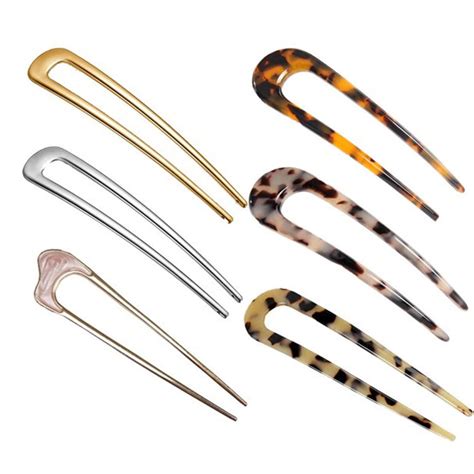History and Cultural Significance
French hair pins, also known as kirby grips or bobby pins, have a rich history that dates back to the late 19th century. These versatile hair accessories were invented by a French hairdresser named Robert Kirby in 1896. Kirby is said to have been inspired by the classic hairpins used by geishas in Japan, but he made a few modifications to suit the needs of Western women.

French hair pins quickly gained popularity among women of all social classes. They were initially used to secure hair buns and other elaborate hairstyles, but they soon found their way into everyday fashion. Today, French hair pins are still a staple in the haircare arsenals of women around the world.
Types of French Hair Pins
There are a wide variety of French hair pins available, each suited to a different hair type and style. The most common types of French hair pins include:
| Type | Description | Uses |
|---|---|---|
| Standard | Basic, U-shaped pin | Securing buns, holding back bangs |
| Mini | Smaller version of standard pin | Taming flyaways, creating intricate designs |
| Maxi | Larger version of standard pin | Holding up thick or heavy hair |
| Wave | Wavy shape with rounded ends | Gentle hold for delicate hair |
| Spiral | Coiled shape | Secure hold for thick, curly hair |
Benefits of Using French Hair Pins
French hair pins offer a number of benefits, including:
- Versatility: French hair pins can be used to style hair in a variety of ways, from simple to complex.
- Durability: French hair pins are made from strong, durable materials, such as metal and plastic, which makes them long-lasting.
- Affordability: French hair pins are relatively inexpensive, making them a budget-friendly option for hair styling.
- Easy to use: French hair pins are easy to insert and remove, even for those with limited dexterity.
Creative Applications of French Hair Pins
In addition to their traditional uses, French hair pins can also be used for a variety of creative applications, including:
- Jewelry: French hair pins can be embellished with beads, charms, and other decorative elements to create unique pieces of jewelry.
- Hair accessories: French hair pins can be used to create custom headbands, barrettes, and other hair accessories.
- Craft supplies: French hair pins can be used in a variety of craft projects, such as making wire sculptures and decorating ornaments.
Tips for Using French Hair Pins
To get the most out of French hair pins, it is important to use them correctly. Here are a few tips:
- Choose the right size and type of pin for your hair. Standard pins are suitable for most hair types, but mini pins can be used for delicate hair and maxi pins can be used for thick or heavy hair.
- Insert the pin at an angle. This will help to secure the pin in place and prevent it from slipping out.
- Don’t use too many pins. A few well-placed pins are all you need to achieve the desired hold.
- Remove pins carefully. To avoid damaging your hair, gently pull the pin out in the opposite direction of insertion.
Conclusion
French hair pins are a timeless and versatile hair accessory that can be used to style hair in a variety of ways. They are affordable, durable, and easy to use, making them a great option for women of all ages. With a little creativity, French hair pins can also be used for a variety of other applications, such as jewelry making and craft projects.
